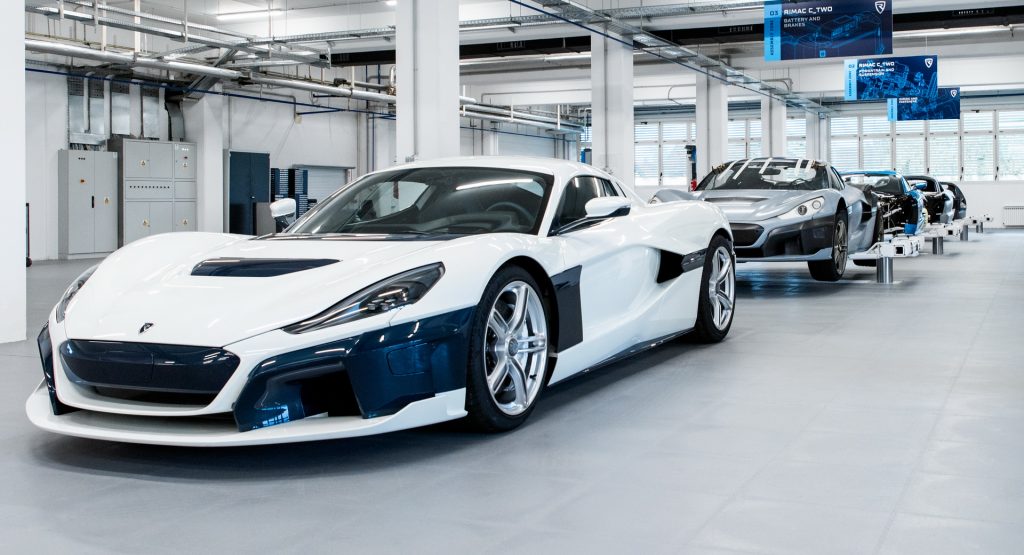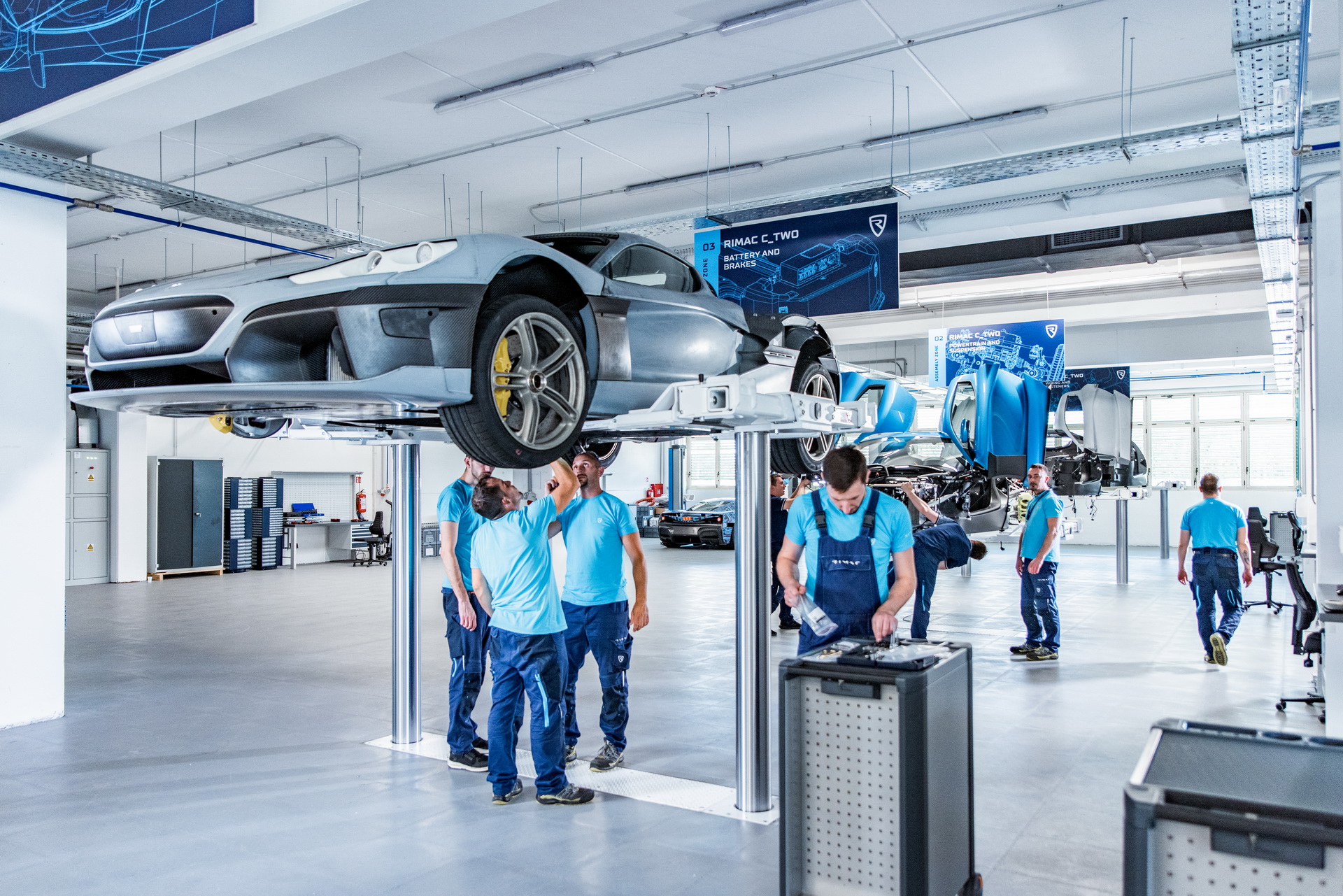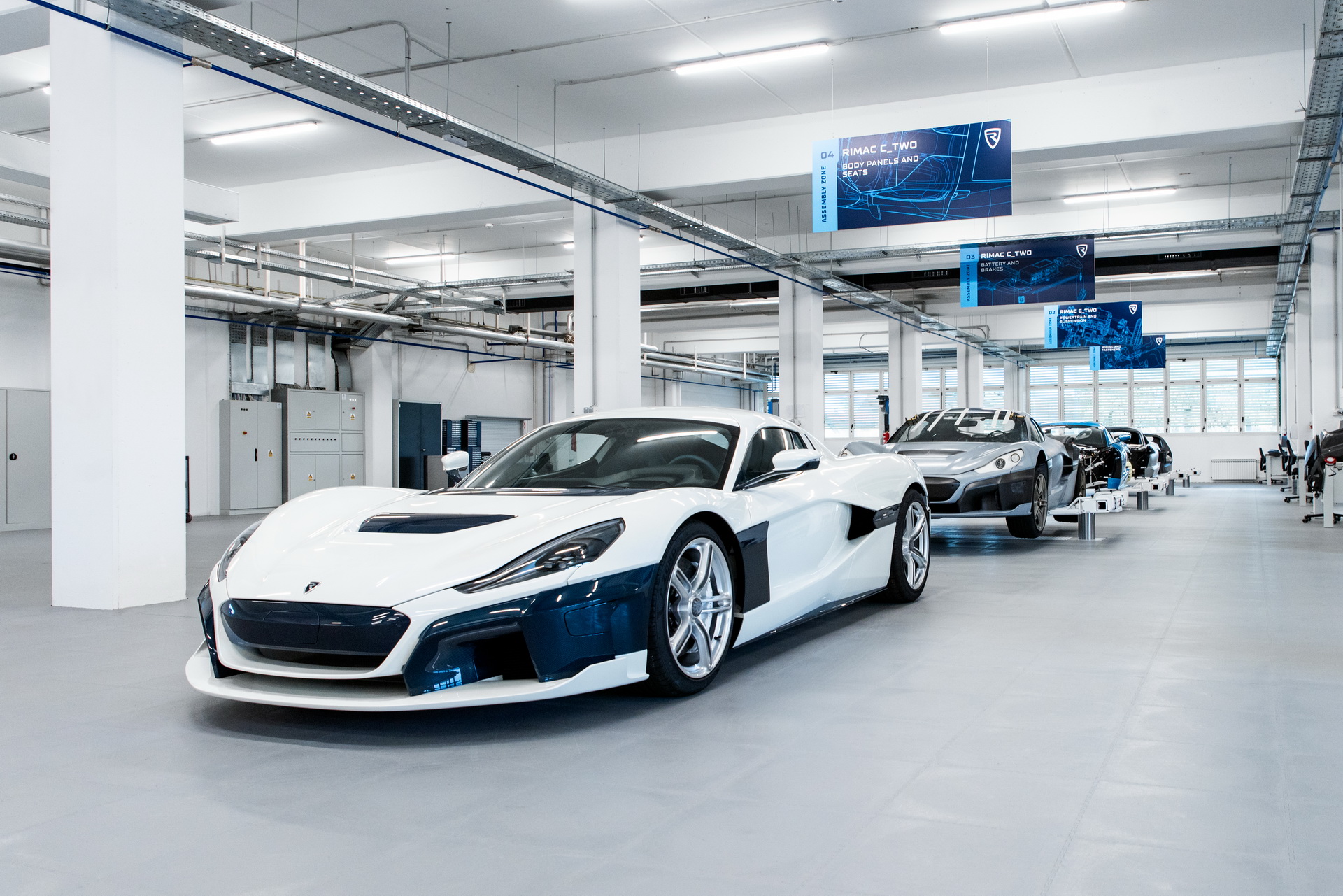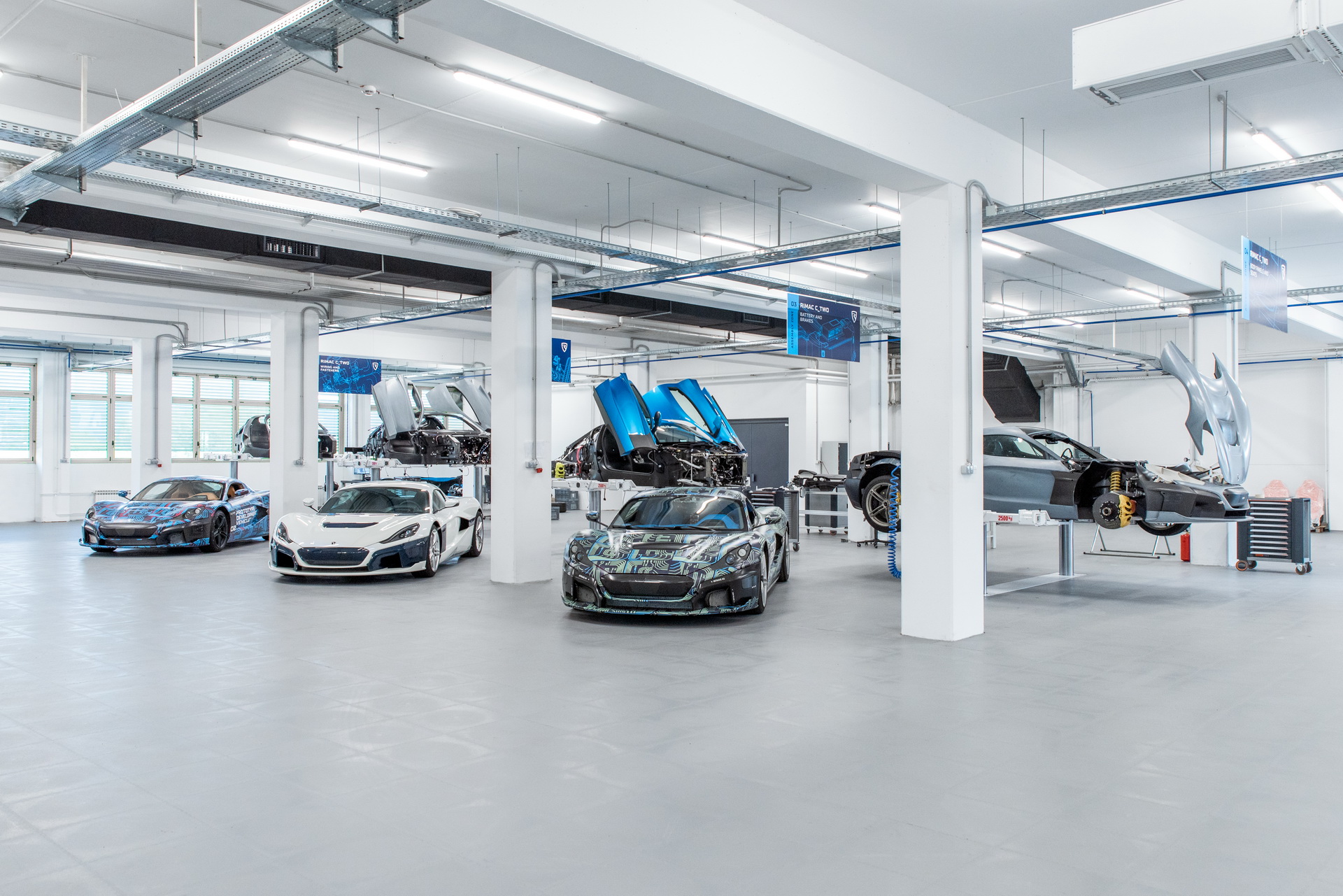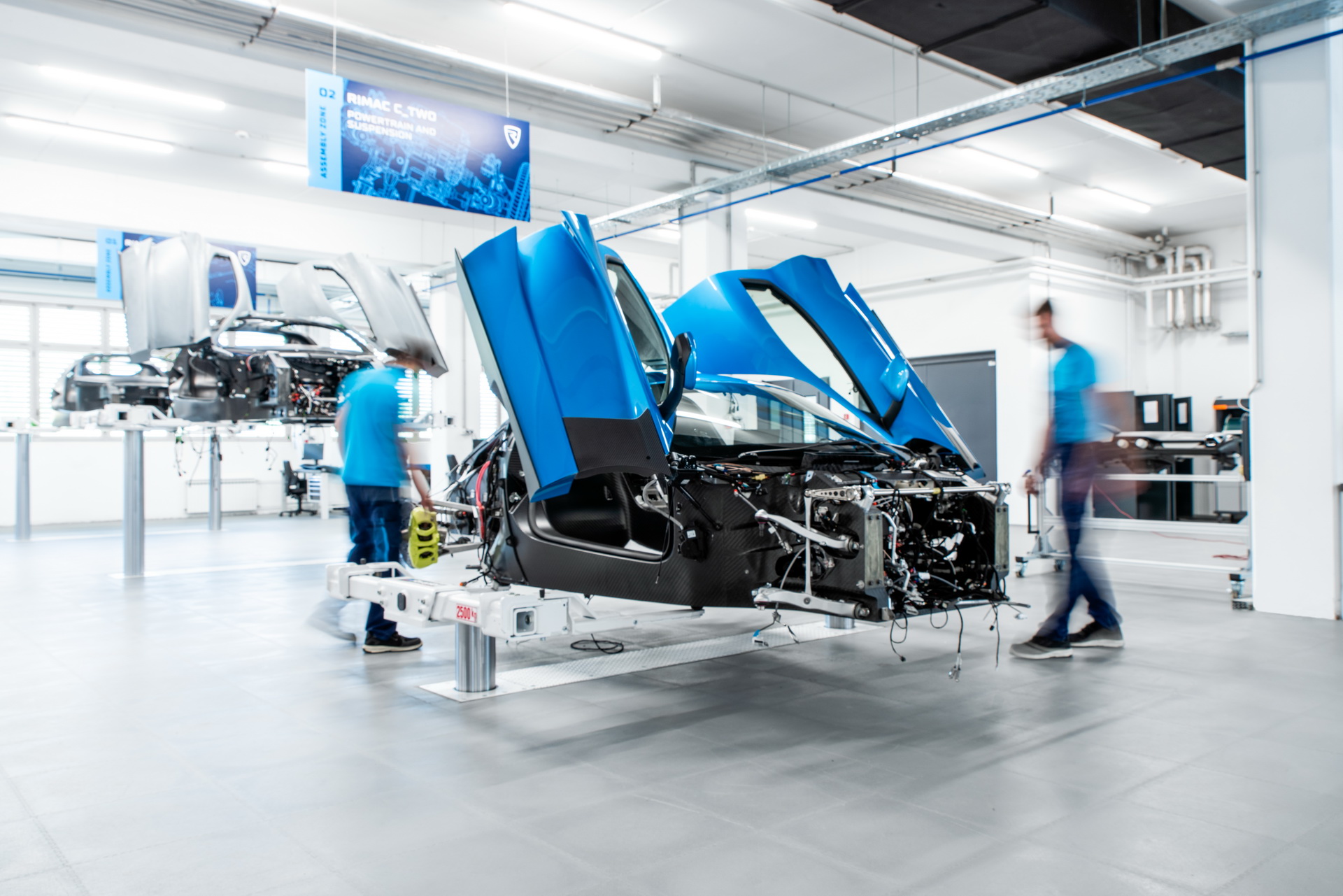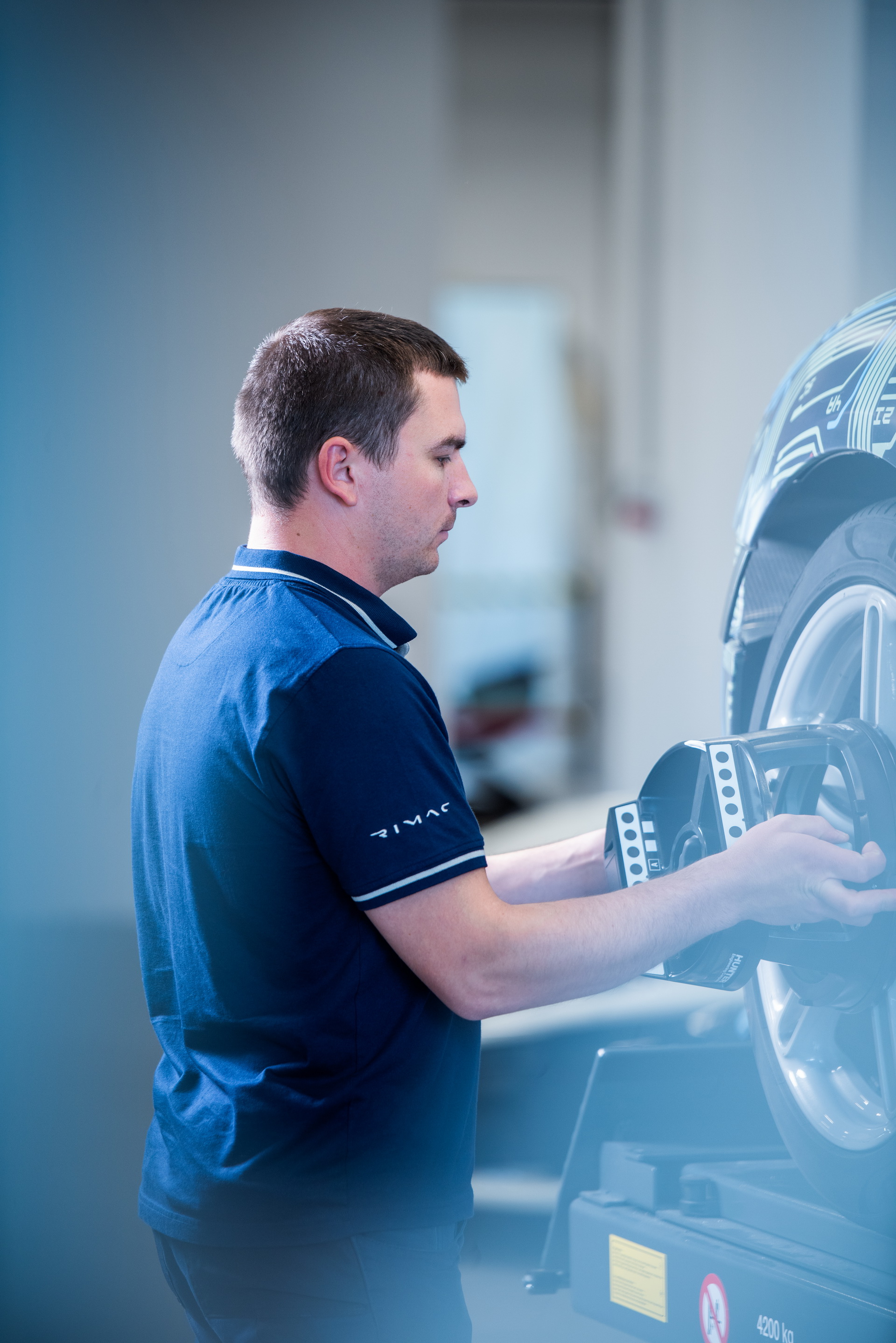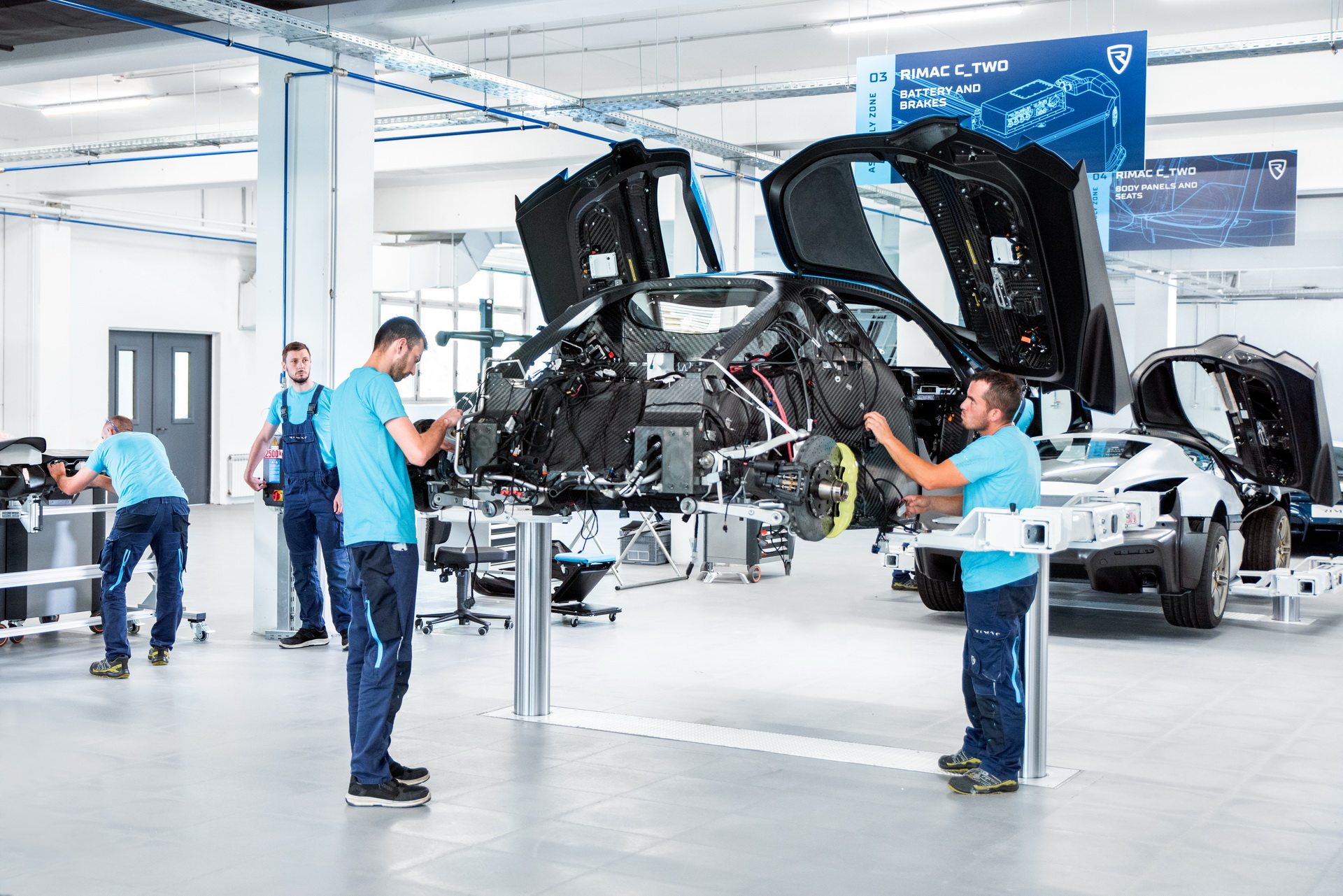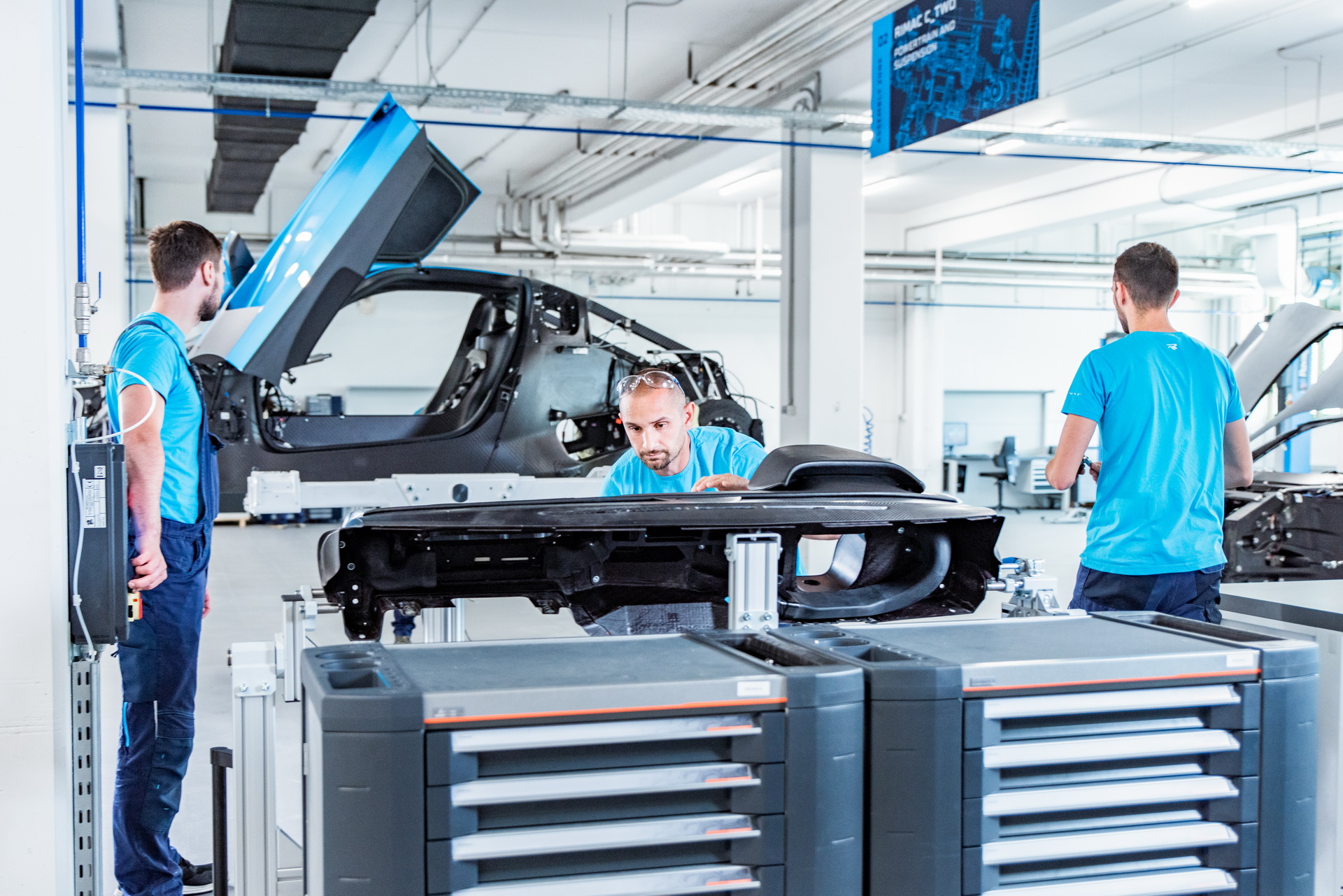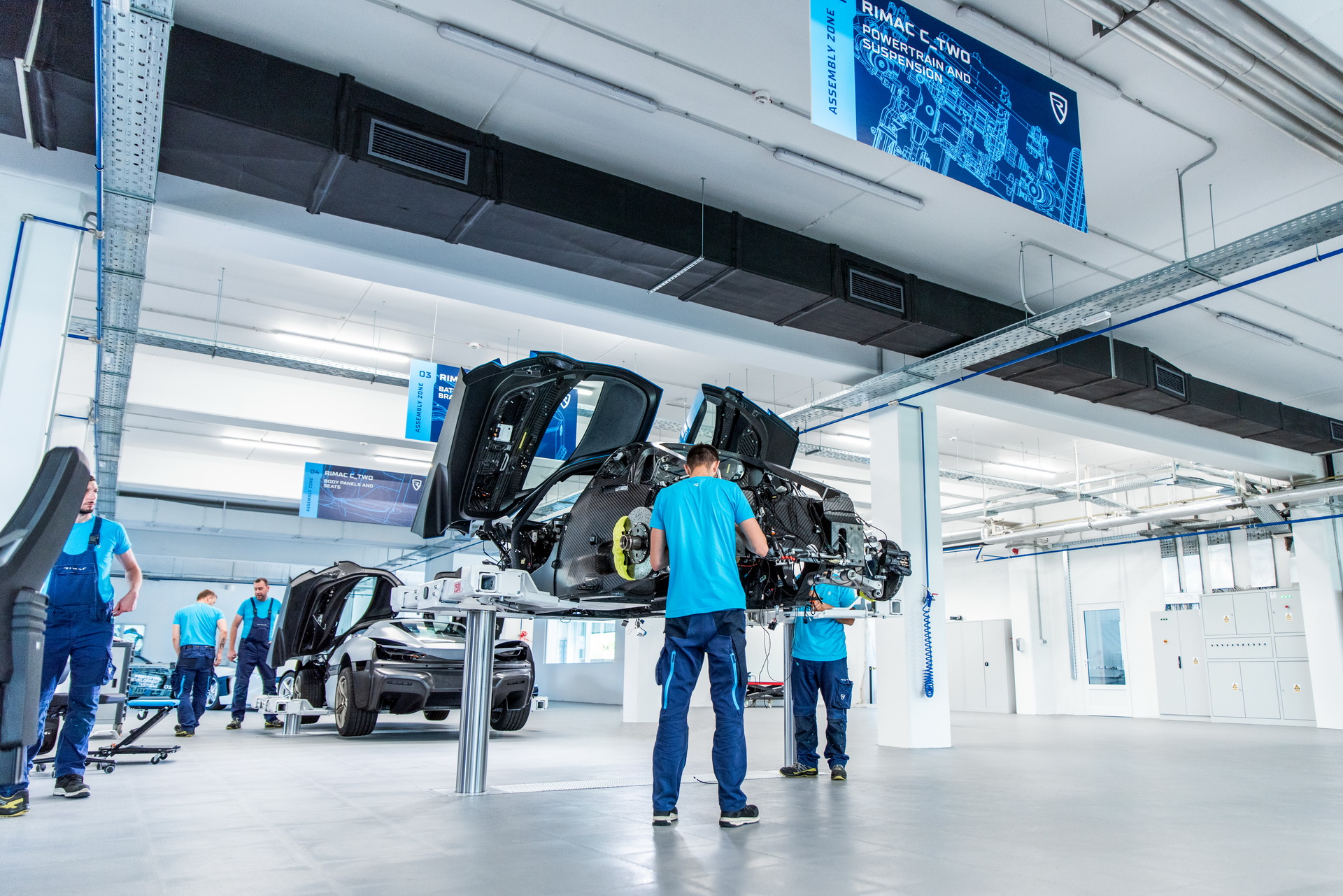Rimac Automobili has completed the construction of a new production line, which will serve as the birthplace of the production version of the electric C_Two hypercar.
The new production line is found at the company’s recently opened factory in Veliko Trgovišće, Croatia, allowing Rimac to accelerate the production of the C_Two prototypes that are necessary for the worldwide homologation process.
Rimac will now be able to build a prototype C_Two in around five weeks, cutting in half the production time compared to its previous “nest production” setup. At full capacity, the production line will allow building four production examples in one month.
Watch Also: Go For A POV Drive In The All-Electric Rimac C_Two Hypercar
So far the company has built four early prototype versions but the homologation process requires the production of 13 more test cars, followed by another 10 pre-series cars. The Croatian EV hypercar maker reckons that most of them will be produced this year.
Rimac also says that the first production examples of the C_Two electric hypercar will be delivered in 2021, instead of the original, pre-COVID-19 2020 date. The company was about to reveal the final name and design of the electric hypercar at the canceled Geneva Motor Show, but the disclosure has been pushed back to later this year.
“While some cars will go straight from the production line to the crash testing facility, others will be used for different validation tests before hitting the wall,” said Mate Rimac, founder and CEO of the company. “Only a handful of prototypes will not be crashed during this program. As we are ramping up prototype production, this new line is an absolutely necessary investment to streamline the process, and it’ll help us as we begin to deliver customer cars from next year.”
The original Rimac C_Two electric hypercar concept was revealed in 2018, featuring a pretty stunning set of numbers: four electric motors for a combined 1,888 HP and 1,696 lb-ft (2,300 Nm) of torque, a 120 kWh battery pack, 0-62 mph (100 km/h) in 1.9 seconds and a top speed of 258 mph (412 km/h).




